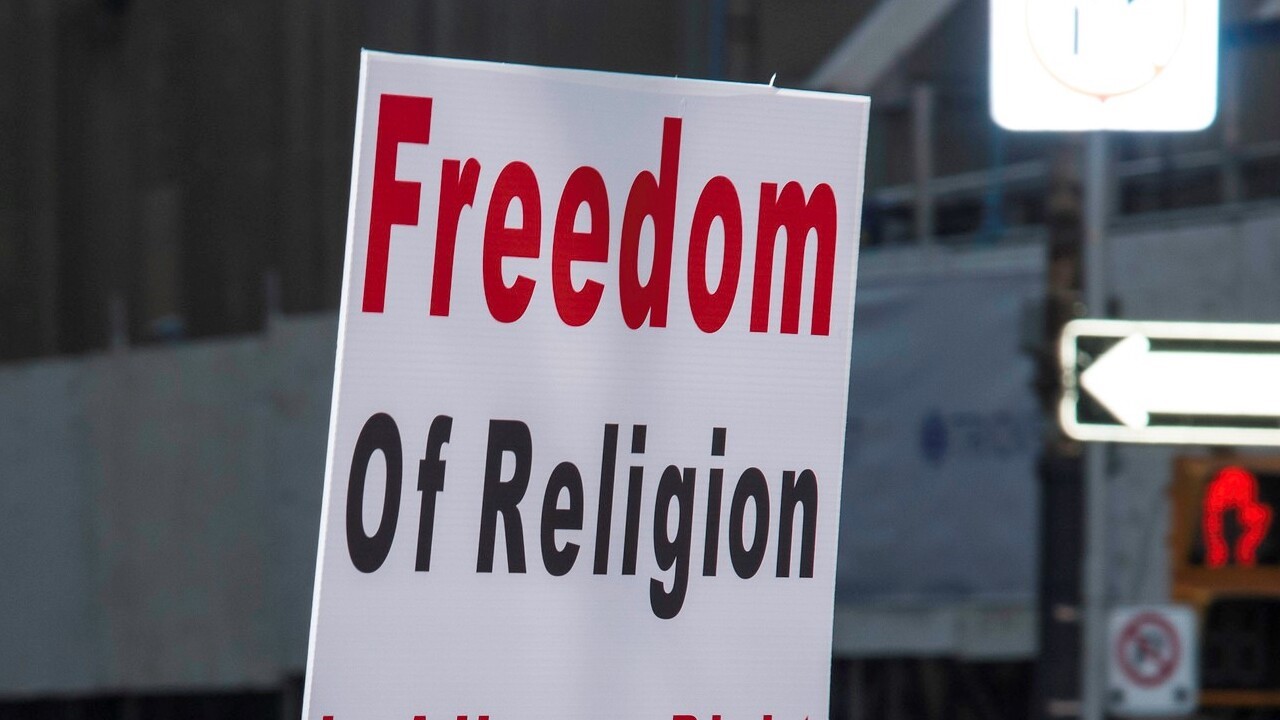In the event that a group of U.S. senators cannot agree on committing enough money to a bipartisan infrastructure plan, Democrats are reportedly considering a $6 trillion plan of their own. It would probably be best described as a package full of progressive items wrapped in magical thinking paper.
Most people would consider $6 trillion a lot of money to drop on infrastructure. That’s because most of us still have an outdated notion of what infrastructure is. In fact, for most people, the word infrastructure conjures up images of roads, bridges, dams and waterways. However, as we’ve discovered during the last few weeks of discussions, for elected Democrats, infrastructure can be so much more than that.
Not long ago, for instance, Sen. Kirsten Gillibrand, D-N.Y., tweeted: “Paid leave is infrastructure. Child care is infrastructure. Caregiving is infrastructure.” So it’s not surprising to see Politico report that Sen. Bernie Sanders, I-Vt., hopes to include an expansion of Medicare in the Democrats’ plan. That expansion would include, among other things, a reduction of the Medicare eligibility age to 60 or even 55.
This $6 trillion Democrat-only plan is well above the $2.3 trillion plan proposed by President Joe Biden. But incredibly, both pale in comparison to the $10 trillion wish list floated by the Congressional Progressive Caucus.
According to Politico, “Their list includes universal child care, lowering of Medicare eligibility age, a permanent extension of the child tax credit.”
How will all of this be paid for, you ask? The truth is: It will not. The Biden plan would allegedly pay for its spending over a span of 15 years, with taxes levied on corporations and rich folks. Considering that they can’t credibly tie the hands of future congresses for the next 15 years, it’s difficult to believe that will happen. Meanwhile, the Democrats’ alternative plan would only pay for half of its spending with tax increases on the rich. In other words, $3 trillion of that plan would be added onto the already enormous national debt.
If anybody believes that financing that infrastructure bill with debt will create jobs, pay for itself and grow the economy, prepare to be disappointed. As I’ve reported many times in the past, the economic literature doesn’t support this, especially in the short term and when the spending is done at the federal level.
This is because federal spending on infrastructure: is driven by political calculations, leads to ridiculous projects like the infamous “bridge to nowhere,” mandates the creation of green or union jobs, romanticizes high-speed rail and prioritizes pet political projects. These bills serve as perfect examples. Also, to the extent that there is a role for the federal government in building infrastructure — defined as roads and bridges, not a federal paid-leave plan or “Medicare for All” — that role should be very small, since most infrastructure is privately owned. These plans shouldn’t be paid for with class warfare taxes either since that will reduce the private-sector investment in infrastructure.
Instead, it should be paid for with infrastructure user fees. A 2018 article in Regulation Magazine by the University of Toronto’s Richard M. Bird and Enid Slack explains that user charges (think tolls) are better than taxes for three reasons: First, charges do not distort behavior like taxes do. Second, they’re more transparent, so consumers can better assess the true costs of the services. The last reason, they write, is that user fees “allow political decisionmakers to assess more readily the performance of service managers — and citizens to do the same with respect to the performance of politicians.” Accountability allows for better and more targeted maintenance and many other benefits.
In spite of this, politicians still prefer to use taxes. They argue that market failures and economies of scale require taxes for the efficient provision of infrastructure. However, as Bird and Slack demonstrate, the arguments should be taken with a grain of salt.
These massive spending plans — or the increased taxes to pay for them — won’t go anywhere, since the Democrats have such a slim majority in the Senate. Still, this entire debate is a nice window into their thinking on these issues, should they ever increase their majority.
PHOTO: Highway construction. Photo by NCDOT communications. Attribution 2.0 Generic (CC BY 2.0).
Veronique de Rugy is the George Gibbs Chair in Political Economy and senior research fellow at the Mercatus Center at George Mason University. Her primary research interests include the U.S. economy, the federal budget, cronyism, taxation, tax competition and financial privacy. Her popular weekly columns address economic issues ranging from lessons on creating sustainable economic growth to the implications of government tax and fiscal policies. She has testified numerous times in front of Congress on the effects of fiscal stimulus, debt, deficits and regulation on the economy.
De Rugy blogs about economics at National Review's The Corner. Her charts, articles and commentary have been featured in a wide range of media outlets, including the "Reality Check" segment on Bloomberg Television's "Street Smart," The New York Times' Room for Debate, The Washington Post, The Wall Street Journal, CNN International, "Stossel," "20/20," C-SPAN's "Washington Journal" and Fox News Channel. She was also named to the Politico 50, the influential media outlet’s “guide to the thinkers, doers and visionaries transforming American politics” in 2015.
Previously, de Rugy has been a resident fellow at the American Enterprise Institute, a policy analyst at the Cato Institute and a research fellow at the Atlas Economic Research Foundation. Before moving to the United States, she oversaw academic programs in France for the Institute for Humane Studies Europe.
She received her master's degree in economics from Paris Dauphine University and her doctorate in economics from Pantheon-Sorbonne University.
Read De Rugy's workhere.






